Throughout the world, there exist landmarks that captivate the imagination, draw millions of visitors each year, and hold deep historical and cultural significance.
From the towering pyramids of Giza in Egypt to the grandeur of the Colosseum in Rome, these iconic structures have stood the test of time, embodying the triumphs, struggles, and aspirations of civilizations past. While these landmarks may be familiar to many, they hold hidden stories and lesser-known facts that shed light on their true magnificence.In this exploration of famous landmarks, we will uncover the hidden histories beneath the surface. We will embark on a journey to discover the untold tales of these architectural marvels, delving into the secrets of their construction, unraveling the purposes they served, and unearthing the stories of the people who built and interacted with them.
We will start our journey with the Pyramids of Giza, ancient marvels that have mystified scholars and visitors alike for centuries. We will unravel the stories of their construction techniques, their purpose as grand tombs for pharaohs, and the beliefs that inspired their creation.
Next, we will venture to the Colosseum, an iconic symbol of the Roman Empire. Beyond its reputation for gladiatorial spectacles, we will reveal the diverse array of events that took place within its walls and explore the intricate infrastructure that supported these grand spectacles.
Moving across continents, we will arrive at the Sydney Opera House, an architectural masterpiece that has become an emblem of Australia. Through its hidden struggles for perfection, we will uncover the challenges faced during its construction and the visionary minds behind its unique design.
Our journey will then take us to the Acropolis of Athens, the cradle of democracy and a testament to the achievements of ancient Greek civilization. We will delve into the stories of the structures that adorn the Acropolis, particularly the Parthenon, and their significance in shaping the foundation of democracy.
Finally, we will encounter the Statue of Christ the Redeemer, an iconic symbol of unity towering over the vibrant city of Rio de Janeiro. We will explore its cultural and religious symbolism, the challenges faced during its creation, and its enduring message of embracing everyone.
These lesser-known stories and hidden facts will shed new light on these famous landmarks, revealing their rich histories, architectural marvels, and cultural significance. Join us on this captivating journey as we uncover the secrets that lie beyond the well-trodden paths, allowing us to truly appreciate the profound legacies left by these extraordinary landmarks.
SYNOPSIS
This exploration of famous landmarks takes us on a journey to uncover the hidden stories and lesser-known facts behind some of the world's most iconic structures. From the Pyramids of Giza to the Colosseum, the Sydney Opera House, the Acropolis of Athens, and the Statue of Christ the Redeemer, each landmark holds a unique tale waiting to be discovered.
The Pyramids of Giza, built as grand tombs for pharaohs, showcase the precision and engineering mastery of the ancient Egyptians. The Colosseum, beyond its gladiatorial spectacles, reveals a world of naval battles, animal hunts, and public executions. The Sydney Opera House, with its struggle for perfection, unfolds the challenges faced during its construction and the visionaries behind its distinctive design. The Acropolis of Athens, as the cradle of democracy, invites us to explore the Parthenon and its role in shaping democratic ideals. Lastly, the Statue of Christ the Redeemer stands as a symbol of unity, offering stories of its cultural and religious significance and the obstacles encountered during its creation.
Through these hidden stories, we gain a deeper appreciation for these landmarks' historical significance, architectural brilliance, and cultural symbolism. They provide a glimpse into the past, reminding us of the triumphs, struggles, and aspirations of the civilizations that created them. Join us on this captivating journey as we uncover the secrets that lie beneath the surface, allowing us to truly understand and cherish these extraordinary landmarks.
Introduction
------------------------------------
Famous landmarks have always fascinated travelers and locals alike, drawing millions of visitors each year. These iconic structures and sites often carry significant historical, cultural, and architectural value. However, beyond the well-known tales and legends associated with these landmarks, lies a treasure trove of hidden histories, untold stories, and intriguing facts waiting to be explored. In this article, we embark on a captivating journey to uncover the lesser-known aspects of some of the world's most famous landmarks, shedding light on their unique stories and deepening our understanding of their significance.
1. The Eiffel Tower: A Symbol of Innovation and Controversy
------------------------------------
The Eiffel Tower, an unmistakable icon of Paris, is renowned for its towering presence and breathtaking views. However, few people are aware of the controversies and challenges that surrounded its construction. From initial public resistance and skepticism to its eventual acceptance as a triumph of engineering, we delve into the fascinating story behind Gustave Eiffel's masterpiece. Furthermore, we explore lesser-known facts about the tower's role during World War I and the surprising scientific experiments conducted at its dizzying heights.
 |
| Photo by Kirsten Drew on Unsplash |
Hidden Facts:
- Gustave Eiffel and his team used advanced engineering techniques, including wind tunnel testing, to ensure the tower's stability.
- During World War II, the French cut the lift cables to hinder Nazi access to the top of the tower.
- The Eiffel Tower has been a backdrop for various iconic events, including tightrope walks, bungee jumps, and marriage proposals.
Here are some hidden stories and lesser-known facts about the Eiffel Tower:
1. A Temporary Structure:
- The Eiffel Tower was initially intended to be a temporary structure for the 1889 Exposition Universelle (World's Fair) held in Paris to celebrate the 100th anniversary of the French Revolution.
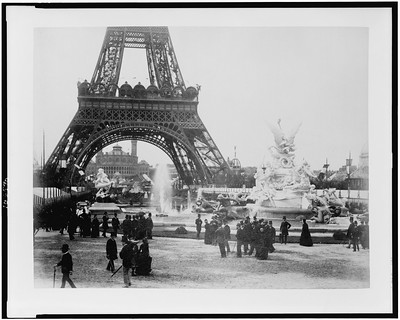 |
| "No Known Restrictions: Eiffel Tower and Fountain Coutan with Trocadéro Palace in background, Paris Exposition, 1889 (LOC)" by pingnews.com is marked with Public Domain Mark 1.0. |
2. Triumph of Engineering:
- The Eiffel Tower was designed by engineer Gustave Eiffel and his team, including Maurice Koechlin and Émile Nouguier, with architect Stephen Sauvestre contributing to its distinctive look.
 |
| "Eiffel Tower" by KJGarbutt is licensed under CC BY 2.0. |
- It was an engineering marvel of its time, utilizing over 18,000 individual iron pieces and 2.5 million rivets to form its lattice-like structure. The tower stands at a height of 324 meters (1,063 feet) and was the tallest man-made structure until the completion of the Chrysler Building in New York City in 1930.
3. World War I Contribution:
- During World War I, the Eiffel Tower played a crucial role in intercepting enemy radio communications. The French military used the tower's height to their advantage, capturing and triangulating German radio signals.
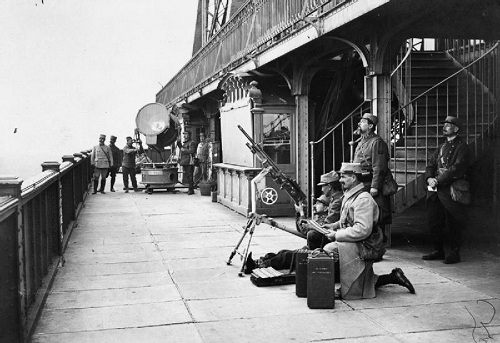 |
| "French anti-aircraft St.Etienne machine gun and searchlight on the second platform of the Eiffel Tower, 26 July 1915 (from www.1914-1918.net)" by Great War Observer is marked with CC0 1.0. |
- The Eiffel Tower's radio interception activities helped French military intelligence gather valuable information about enemy movements and contributed to their war efforts.
/p>
4. Scientific Experiments:
- Throughout its history, the Eiffel Tower has been a site for numerous scientific experiments and technological innovations.
- In the early 20th century, the French inventor Gustave Ferrié used the tower to conduct experiments related to wireless telegraphy and early radio transmission. These experiments were instrumental in the development of wireless communication technology.
 |
| "File:Buste du général Ferrié, musée des transmissions du Mont-Valérien.jpg" by Celette is licensed under CC BY-SA 4.0. |
- The tower's height and exposure to the elements also made it a unique site for conducting meteorological studies and atmospheric research.
5. Tower Climbing Records and Stunts:
- Over the years, the Eiffel Tower has attracted daredevils and thrill-seekers who attempt daring climbs and stunts.
- In 1912, Franz Reichelt, a tailor, attempted to parachute from the first level of the tower using a self-designed suit. Unfortunately, his parachute failed to deploy, resulting in his tragic death.
 |
| "La tour Eiffel sparkling during the light show" by Jorge Lascar is licensed under CC BY 2.0. |
- In recent years, climbers such as Alain Robert, also known as "The French Spiderman," have scaled the tower without any safety equipment, showcasing their climbing skills and capturing global attention.
6. Illumination and Light Shows:
- The Eiffel Tower is renowned for its spectacular light displays and illuminations. Since 1985, the tower has been adorned with thousands of twinkling lights, creating a breathtaking sight for visitors.
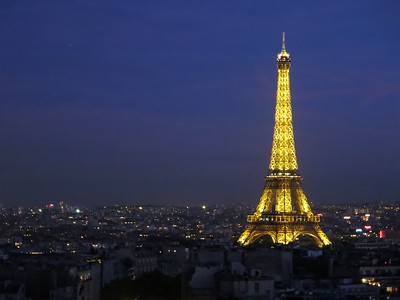 |
| "Eiffel Tower" by D-Stanley is licensed under CC BY 2.0. |
- In recent years, the tower's lighting has been upgraded with energy-efficient LED technology, allowing for a wider range of lighting effects and colorful displays.
- The tower is often illuminated in different colors to commemorate significant events, celebrations, and charitable causes, serving as a symbol of solidarity and support.
7. Secret Apartment:
- Gustave Eiffel had a private apartment on the topmost level of the tower. The apartment served as a personal retreat for him and was furnished with elegant decor and furnishings.
 |
| "Kỹ sư người Pháp Gustave Eiffel và bốn người khác trên đỉnh Tháp Eiffel trong dịp Đấu xảo Quốc tế Paris 1889" by manhhai is licensed under CC BY 2.0. |
- The apartment was kept private and was not open to the public during Eiffel's lifetime. However, it is now open for public viewing and showcases the living space of the tower's visionary engineer.
These hidden stories and lesser-known facts about the Eiffel Tower add depth to its history and emphasize its significance as a symbol of innovation, engineering prowess, and cultural heritage.
2. The Great Wall of China: Beyond the Boundaries
------------------------------------
The Great Wall of China stands as a testament to human determination and engineering excellence. While its colossal size and historical significance are widely acknowledged, there are intriguing hidden histories to be discovered. We unravel the lesser-known stories of the wall's construction, its purpose beyond defense, and the lives of the soldiers who guarded its vast expanse. Moreover, we delve into the mystique of the Great Wall, exploring the legends, myths, and cultural impact that have shaped its enduring legacy.
 |
| Photo by Joel Danielson on Unsplash |
Hidden Facts:
- The Great Wall spans over 13,000 miles, making it the world's longest man-made structure.
- It is believed that more than one million people died while building the wall.
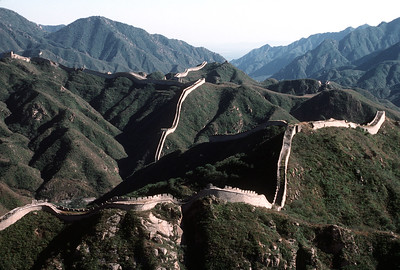 |
| "Public Domain: Great Wall, China (DF-ST-99-05022 DOD)" by pingnews.com is marked with Public Domain Mark 1.0. |
- The wall not only served as a defensive structure but also facilitated trade, communication, and cultural exchange along the Silk Road.
Here are some hidden stories and lesser-known facts about the Great Wall of China:
1. Construction Techniques and Labor:
- Contrary to popular belief, the Great Wall of China was not built in a single period but was constructed, expanded, and fortified over several centuries by different Chinese dynasties.
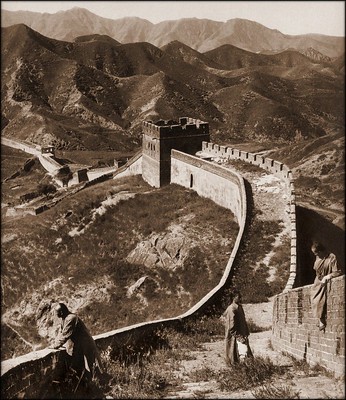 |
| "Greatwall China [1907] Herbert G. Ponting [RESTORED]" by ralphrepo is licensed under CC BY 2.0. |
- The construction of the wall involved a massive workforce, including soldiers, peasants, and prisoners. It is estimated that millions of people worked on the wall throughout its history.
- Many workers faced grueling conditions, enduring harsh weather, rugged terrains, and dangerous labor. Some sections of the wall were constructed in treacherous mountain ranges, making the construction process even more challenging.
2. The Wall's Purpose:
- While commonly associated with defense against invasions, the Great Wall served a more diverse range of purposes beyond military fortification.
- Along with protecting against nomadic raids, the wall served as a means of border control, regulating trade, and monitoring the movement of goods and people.
- The wall also facilitated communication systems, with signal towers and beacon fires used to transmit messages across vast distances.
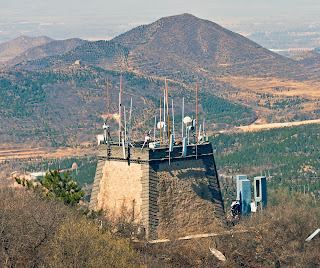 |
| "File:Communications antennae near the Great Wall of China at Badaling.jpg" by Daniel Case is licensed under CC BY-SA 3.0. |
3. Length and Structure:
- The Great Wall of China is an architectural marvel, spanning over 13,000 miles (21,196 kilometers) across various terrains, including mountains, deserts, and plains.
- It is not a continuous wall but consists of different sections that were built and connected over centuries. Some sections are well-preserved, while others have deteriorated or disappeared over time.
- The wall is made up of different materials, including stone, brick, earth, wood, and other local resources. Its construction techniques varied depending on the region and period.
4. Secrets and Mysteries:
- The Great Wall of China holds various mysteries and legends. For example, there are stories of hidden treasures buried within the walls to protect them from invasions.
- It is believed that the bodies of workers who died during the wall's construction were buried within the wall itself as a means of consecrating their efforts and guarding against evil spirits.
- The Great Wall also witnessed important historical events, such as battles, negotiations, and cultural exchanges, leaving behind hidden stories that add to its rich tapestry.
 |
| "China wall" by tonynetone is licensed under CC BY 2.0. |
5. Cultural Significance:
- The Great Wall of China has immense cultural significance and is considered a symbol of Chinese heritage, identity, and unity.
- It has inspired countless poets, artists, writers, and filmmakers who have celebrated its grandeur and mystique in their works.
- UNESCO designated the Great Wall as a World Heritage Site in 1987, recognizing its outstanding universal value and the need for its preservation.
 |
| "Great Wall of China" by Eric Beato is licensed under CC BY 2.0. |
6. Exploration and Preservation:
- While some sections of the Great Wall are popular tourist destinations, there are remote and less-explored areas that offer unique insights into its construction and historical context.
- Efforts are ongoing to preserve and restore the wall, as weathering, erosion, and human activities pose significant threats to its longevity.
 |
| "Public Domain: Nixon at Great Wall of China, 1972 (NARA)" by pingnews.com is marked with Public Domain Mark 1.0. |
- Research and archaeological excavations continue to uncover hidden stories and artifacts related to the wall's construction, usage, and significance.
These hidden stories and lesser-known facts about the Great Wall of China highlight its historical, cultural, and architectural significance, going beyond its role as a defensive structure. They showcase the incredible human endeavor, innovation, and lasting impact of this iconic landmark.
3. Machu Picchu: Lost City of the Incas
------------------------------------
Nestled amidst the Peruvian Andes, Machu Picchu enchants visitors with its mystical beauty and architectural grandeur. Often hailed as the Lost City of the Incas, this ancient citadel has captivated historians and explorers for centuries. In this section, we dive into the lesser-known details of its rediscovery, the enigmatic purpose of its construction, and the vibrant culture of the Inca civilization. We also explore the ongoing preservation efforts and the challenges faced in maintaining this UNESCO World Heritage Site.
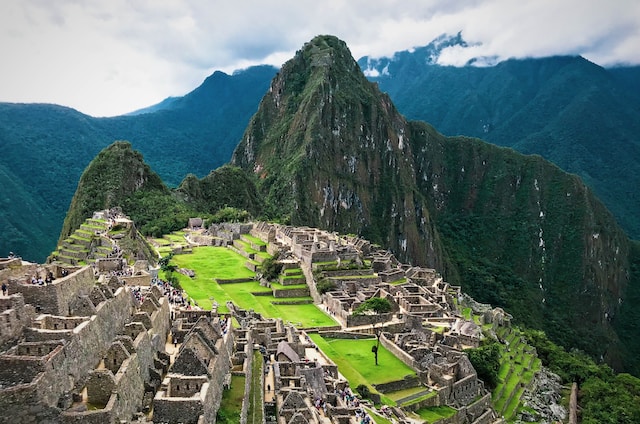 |
| Photo by Eddie Kiszka on Unsplash |
Hidden Facts:
- Machu Picchu is aligned with celestial events, such as solstices and equinoxes, suggesting its significance as an astronomical observatory.
- The site is surrounded by agricultural terraces that demonstrate advanced farming techniques used by the Incas.
- Machu Picchu was abandoned and hidden from the Spanish conquistadors, preserving its remarkable state of preservation.
Here are some hidden stories and lesser-known facts about Machu Picchu:
1. Rediscovery by Hiram Bingham:
- Machu Picchu remained hidden from the Spanish conquistadors and was largely forgotten until its rediscovery in 1911 by American explorer Hiram Bingham.
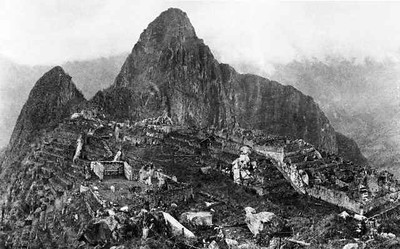 |
| "La Scoperta del Machu Picchu. Non fu Hiram Bingham a scoprirlo" by ViaggioRoutard is licensed under CC BY 2.0. |
- Bingham stumbled upon the site while searching for the lost city of Vilcabamba. Although Machu Picchu was not the legendary Vilcabamba, its remarkable state of preservation and architectural grandeur captivated the world.
2. Purpose and Function:
- The purpose of Machu Picchu remains a subject of debate among historians and archaeologists. It is often referred to as a "lost city," but its exact function within the Inca Empire is still not fully understood.
- Some theories suggest that Machu Picchu was a royal estate for the Inca ruler Pachacuti and his family, while others propose that it served as a sacred pilgrimage site or a center for astronomical observations.
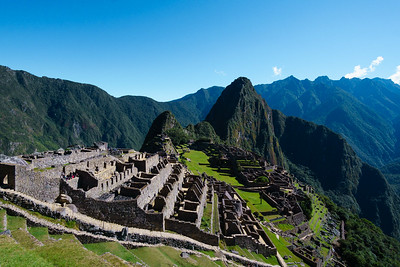 |
| "Machu Picchu" by Zentravellers is licensed under CC BY 2.0. |
3. Advanced Engineering and Architecture:
- The Incas employed advanced architectural techniques to construct Machu Picchu, showcasing their mastery of stone masonry.
- The precision in stone cutting and fitting, as seen in the seamless joints of the structures, is a testament to their engineering prowess.
- The city's buildings were designed with earthquake-resistant techniques, allowing them to withstand seismic activity in the region.
 |
| "Peru Travel: Agricultural terraces at Machu Picchu" by Latin America For Less is licensed under CC BY 2.0. |
4. Hidden Terraces and Agricultural Innovation:
- Machu Picchu's agricultural terraces are an integral part of its design and served both practical and symbolic purposes.
- The terraces were built to maximize agricultural productivity by creating flat surfaces for cultivating crops. They also prevented soil erosion on the steep slopes.
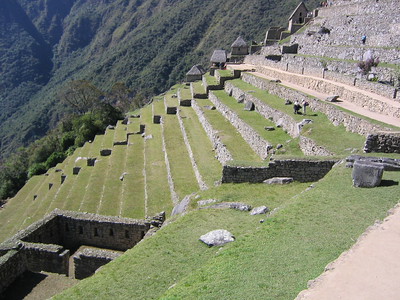 |
| "Terraces at Machu Picchu" by Phillie Casablanca is licensed under CC BY 2.0. |
- The Incas implemented innovative farming techniques, such as terraced irrigation systems, to support sustainable agriculture in the challenging mountainous environment.
5. Sacred Intihuatana Stone:
- One of the most famous features of Machu Picchu is the Intihuatana stone, also known as the "Hitching Post of the Sun."
- The Intihuatana stone served as a solar observatory, allowing the Incas to determine the changing seasons and perform rituals aligned with celestial events.
- The stone was believed to possess spiritual and energetic qualities, connecting the physical and spiritual realms.
 |
| "The Intihuatana stone, damaged by JWT when filming and ad campaign here" by Jorge Lascar is licensed under CC BY 2.0. |
6. Intentional Abandonment and Preservation:
- Machu Picchu was abandoned by the Incas, likely due to the Spanish conquest and the subsequent collapse of the Inca Empire.
- The remote location of Machu Picchu, nestled high in the Andes mountains, contributed to its preservation. Its isolation shielded it from the destructive forces of colonization and looting.
- The site's hidden nature and lack of documentation about its existence played a crucial role in its preservation until its rediscovery in the early 20th century.
7. Ongoing Research and Conservation:
- Machu Picchu continues to be a subject of extensive research, with ongoing archaeological excavations shedding new light on its history and significance.
- Efforts are being made to protect and conserve the site from environmental factors, tourism impact, and potential threats to its preservation.
- Sustainable tourism practices and visitor management strategies have been implemented to ensure the site's long-term preservation and appreciation.
These hidden stories and lesser-known facts about Machu Picchu deepen our understanding and appreciation of this remarkable ancient city. They highlight its architectural splendor, cultural significance, and the mysteries that still surround its purpose and abandonment.
4. The Taj Mahal: A Monument of Eternal Love
------------------------------------
The Taj Mahal, an exquisite marble mausoleum in India, is celebrated as a symbol of love and devotion. However, there are intriguing tales hidden within its gleaming walls. We unveil the lesser-known stories of the Taj Mahal's construction, its architectural influences, and the emotional drama that unfolded behind its creation. Additionally, we shed light on the intricate craftsmanship and artistic techniques employed in building this masterpiece, cementing its status as one of the world's most enduring symbols of beauty.
 |
| "India-6117 - Taj Mahal" by archer10 (Dennis) is licensed under CC BY-SA 2.0. |
Hidden Facts:
- The white marble used in the Taj Mahal changes color throughout the day, appearing pink in the morning, white in the afternoon, and golden at sunset.
- The Taj Mahal's construction employed various architectural styles, blending Persian, Islamic, and Indian influences.
- The symmetrical gardens surrounding the Taj Mahal reflect the concept of paradise in Islamic tradition.
5. The Statue of Liberty: A Beacon of Hope
------------------------------------
The Statue of Liberty, a gift from France to the United States, has become an emblem of freedom and democracy. While its welcoming stance and torch-bearing pose are familiar to many, the statue holds lesser-known stories that amplify its significance. From the historical connections to the abolition of slavery to the symbolism embedded in its design, we unravel the hidden narratives that make Lady Liberty an enduring beacon of hope for millions of immigrants who arrived on America's shores.
 |
| Photo by Barth Bailey on Unsplash |
Hidden Facts:
- The statue's copper exterior has developed a green patina over time due to natural weathering.
- The seven spikes on the crown represent the seven rays of the sun, symbolizing enlightenment.
- The statue served as an inspiration for the creation of similar replicas around the world, from Japan to Brazil.
Here are some hidden stories and lesser-known facts about the Statue of Liberty:
1. Gift from France:
- The Statue of Liberty was a gift from the people of France to the United States, symbolizing the enduring friendship between the two nations.
- French sculptor Frédéric Auguste Bartholdi designed the statue, while Gustave Eiffel, the engineer behind the Eiffel Tower, designed its internal framework.
- The statue was constructed in France and then disassembled and shipped to the United States in 350 individual pieces.
2. Symbol of Freedom and Democracy:
- The Statue of Liberty has come to represent freedom, democracy, and the American dream. It stands as a symbol of hope for immigrants seeking a better life in the United States.
- The statue's official name is "Liberty Enlightening the World," emphasizing its role in promoting enlightenment and liberty for all.
3. Broken Chains:
- At the feet of the statue, broken chains are symbolizing the abolition of slavery and freedom from oppression.
- The chains are not easily visible from a distance, but they serve as a powerful reminder of the statue's message of liberation.
4. Fundraising Efforts:
- The pedestal on which the statue stands was financed through a fundraising campaign in the United States.
- A significant portion of the funding came from small donations made by American citizens. Emma Lazarus, a poet, and writer, contributed to the famous lines inscribed on the statue's pedestal: "Give me your tired, your poor, your huddled masses yearning to breathe free."
5. Original Copper Color:
- When the Statue of Liberty was unveiled in 1886, it had a shiny, copper color. Over time, the statue's copper exterior developed a green patina due to oxidation, giving it the iconic green appearance it has today.
6. Secret Torch Access:
- The statue's torch was originally designed to emit a beacon of light, serving as a navigational aid for ships. However, due to safety concerns, the torch was closed to the public in 1916.
- A hidden staircase inside the statue leads to a platform located just under the torch. This platform was used by maintenance workers for many years, but it is not accessible to the public.
7. Size and Proportions:
- The Statue of Liberty stands at a height of 305 feet (93 meters) from the base to the tip of the torch.
- Its face alone measures more than 8 feet (2.4 meters) tall, and the statue weighs approximately 450,000 pounds (204,000 kilograms).
- The statue's height and proportions were carefully calculated to create a sense of grandeur and magnificence.
8. Replicas and Inspirations:
- The Statue of Liberty has inspired the creation of numerous replicas around the world, from Las Vegas to Paris, and even in unexpected places like a theme park in Japan.
- The statue's iconic image is often used to represent freedom and democracy in various contexts, from political cartoons to commercial advertisements.
The hidden stories and lesser-known facts about the Statue of Liberty enrich our understanding of its historical significance and the enduring ideals it represents. It stands as a beacon of hope and a powerful symbol of freedom for people around the world.
6. The Pyramids of Giza: Ancient Marvels
------------------------------------
The Pyramids of Giza, standing as eternal guardians of Egypt's ancient past, are among the most enigmatic structures ever built. While many know of their existence, the true history and purpose of these pyramids remain shrouded in mystery. In this section, we unravel the lesser-known stories surrounding the construction techniques, the lives of the pharaohs who commissioned them, and the intricate religious beliefs that influenced their design. We also delve into the lesser-known chambers, passageways, and hidden treasures within these timeless wonders.
 |
| "Pyramids of Giza" by Mark Fischer is licensed under CC BY-SA 2.0. |
Hidden Facts:
- The pyramids were built as tombs for pharaohs, who were believed to become gods in the afterlife.
- Each pyramid was constructed with precise alignment to the cardinal directions.
- The construction of the pyramids required immense manpower, and workers lived in temporary settlements near the sites.
Here are hidden stories and lesser-known facts about each of the landmarks you mentioned:
The Pyramids of Giza: Ancient Marvels
- The Pyramids of Giza were built as tombs for pharaohs during the Old Kingdom period of ancient Egypt.
- The Great Pyramid of Giza, built for Pharaoh Khufu, was originally covered in smooth, polished limestone, which gave it a gleaming appearance.
- The construction of the pyramids involved incredible precision and engineering, with each block weighing several tons and being precisely cut and positioned.
- The pyramids were built with the belief that they would serve as vehicles for the pharaohs' souls to ascend to the heavens and unite with the sun god Ra.
7. The Colosseum: Gladiatorial Spectacles and Beyond
------------------------------------
The Colosseum in Rome is a symbol of grandeur and brutality, associated with the spectacles of gladiatorial combat. However, behind its iconic facade, hidden tales reveal the cultural, social, and political significance of this amphitheater. We explore the lesser-known aspects of the Colosseum's construction, its innovative architectural features, and the wide range of events that took place within its walls. Furthermore, we examine the societal implications of gladiatorial games and the lasting impact of this ancient marvel on modern-day entertainment.
Hidden Facts:
- The Colosseum could accommodate over 50,000 spectators, who were organized into different social classes and genders.
- The gladiatorial contests held in the Colosseum often involved elaborate staging, with props, special effects, and animal hunts.
- The Colosseum fell into disrepair during the Middle Ages and was repurposed as a quarry for building materials.
The Colosseum: Gladiatorial Spectacles and Beyond
- The Colosseum, also known as the Flavian Amphitheatre, was the largest amphitheater ever built in the Roman Empire.
- Gladiatorial contests were one of the many spectacles held in the Colosseum, but they also hosted naval battles, animal hunts, and public executions.
- The construction of the Colosseum started in 72 AD and was completed in 80 AD. It could hold an estimated 50,000 to 80,000 spectators.
- The Colosseum's underground chambers were home to a vast network of tunnels and rooms used to house gladiators, animals, and props.
8. The Sydney Opera House: A Struggle for Perfection
------------------------------------
The Sydney Opera House is an architectural masterpiece that graces the shores of Australia. While its distinctive design is instantly recognizable, few are aware of the challenges faced during its construction. In this section, we uncover the lesser-known stories behind the creation of this iconic landmark, from the ambitious vision of its architect, Jørn Utzon, to the technical and logistical obstacles encountered during the building process. We also explore the cultural significance of the Opera House and its role as a symbol of national pride.
 |
| Photo by Jasper Wilde on Unsplash |
Hidden Facts:
- The roof of the Sydney Opera House is covered in over one million ceramic tiles.
- The construction of the opera house faced numerous technical and financial challenges, resulting in the resignation of the original architect, Jørn Utzon.
- The Sydney Opera House hosts a diverse range of performances, from opera and ballet to rock concerts and multimedia shows.
The Sydney Opera House: A Struggle for Perfection
- The construction of the Sydney Opera House was a challenging and complex endeavor that took 14 years to complete.
- Danish architect Jørn Utzon won the design competition for the opera house in 1957, but the project faced numerous setbacks and controversies.
- Utzon resigned from the project in 1966 due to disagreements and was not present for the building's completion in 1973.
- The distinctive sail-like design of the Sydney Opera House was inspired by Utzon's exploration of natural forms and his desire to create a unique and iconic structure.
9. The Acropolis of Athens: Cradle of Democracy
------------------------------------
The Acropolis of Athens stands as a testament to the birthplace of democracy and the legacy of ancient Greece. While its majestic Parthenon dominates the skyline, there are hidden histories surrounding this ancient citadel. We delve into the lesser-known aspects of the Acropolis, including the other temples and structures that once adorned its summit. Additionally, we explore the influence of Greek philosophy, art, and architecture on Western civilization and the ongoing efforts to preserve and restore this UNESCO World Heritage Site.
 |
| Photo by Enric Domas on Unsplash |
Hidden Facts:
- The Parthenon was originally adorned with colorful paints and sculptures, which have since faded or been lost.
- The Acropolis served as a fortified citadel, housing not only temples but also residences, treasuries, and workshops.
- Many of the original statues and artifacts from the Acropolis are now on display in the Acropolis Museum.
The Acropolis of Athens: Cradle of Democracy
- The Acropolis of Athens is a hilltop citadel that contains several ancient Greek structures, including the iconic Parthenon.
- The Parthenon was built as a temple dedicated to the goddess Athena, the patron deity of Athens.
- The Acropolis served as the religious and cultural center of Athens and played a significant role in the development of democracy in ancient Greece.
- Over the centuries, the Acropolis suffered damage from wars, explosions, and weathering, but extensive restoration efforts have been made to preserve its historical significance.
10. The Statue of Christ the Redeemer: Symbol of Unity
------------------------------------
Perched atop the Corcovado Mountain in Rio de Janeiro, the Statue of Christ the Redeemer is a global symbol of peace and faith. While its grandeur is well-known, there are lesser-known stories that enrich its meaning. We uncover the history behind the statue's construction, the architectural feats involved, and the religious.
 |
| Photo by Raphael Nogueira on Unsplash |
Hidden Facts:
- The statue was designed by French sculptor Paul Landowski and Brazilian engineer Heitor da Silva Costa.
- It took nine years to complete the construction of the statue, involving workers who faced challenging conditions on the mountain.
- The statue has withstood lightning strikes, earthquakes, and other natural events due to its robust engineering and materials.
By exploring these hidden histories and lesser-known facts, we gain a deeper appreciation for the significance and intrigue surrounding these famous landmarks
The Statue of Christ the Redeemer: Symbol of Unity
- The Statue of Christ the Redeemer is an iconic statue located in Rio de Janeiro, Brazil, atop the Corcovado mountain.
- The statue was designed by Brazilian engineer Heitor da Silva Costa and French sculptor Paul Landowski and was unveiled in 1931.
- The statue stands at a height of 98 feet (30 meters) and has become a symbol of Christianity and a representation of Brazil's strong Catholic faith.
- The statue's arms were designed to have a slight inclination outward, symbolizing a gesture of embracing and welcoming all people.
These hidden stories and lesser-known facts about these famous landmarks offer glimpses into their historical significance, architectural marvels, and cultural symbolism. They deepen our appreciation for these remarkable structures and the stories they tell.
Conclusion
------------------------------------
As we conclude our journey through the hidden histories of famous landmarks, we realize that these iconic structures are not merely static symbols frozen in time. Instead, they embody dynamic narratives, shaped by human endeavors, triumphs, and challenges. By delving deeper into the lesser-known facts and stories behind these landmarks, we gain a more comprehensive understanding of their significance and appreciate the complexities that lie beyond their surface beauty. The world's famous landmarks are not just tourist attractions but living testaments to the ingenuity, creativity, and resilience of humanity throughout history. Let us continue to explore and celebrate the hidden histories that bring these landmarks to life, inspiring generations to come.




.gif)





0 Comments
Please do not enter spam links in the comment box.